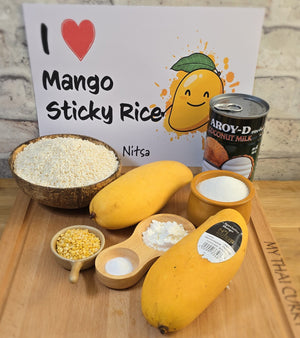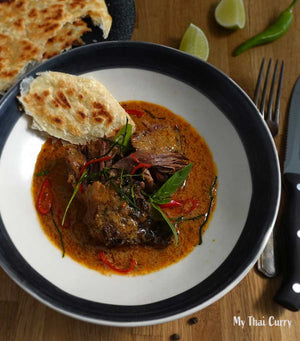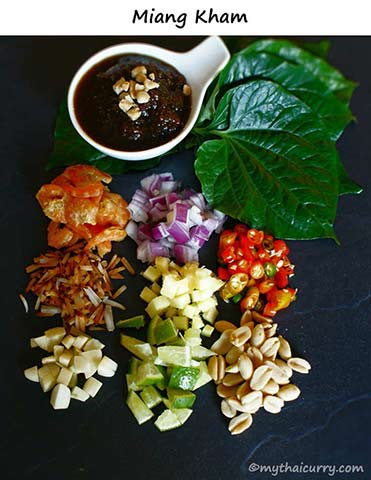Coconut Milk Summary
September 06, 2013
1 Comment

Coconut Milk
The available brands of coconut milk in the UK and elsewhere vary markedly in their thickness and composition. The different thickeners and emulsifiers will have an impact on the consistency of the final dish. Additives like guar gum can have a disastrous effect on a Thai curry as the sauce reduces. As a general guide you should always try to use a brand that contains at least 40% coconut milk and the fewer ingredients listed on the label the better. Although I always try to use brands such as Chaokoh or Aroy-D, far superior in my opinion, these can be difficult to find outside of shops that specialise in Southeast Asian foods or unless you have a local Chinatown. These are also usually priced far more competitively than the brands you will find available in supermarkets. Note that if you use a "light" or "reduced fat" coconut milk you will end up with a soup and not a curry!
UPDATE. March 2022. Aroy-D now being stocked by both Morrisons and Sainsbury's in the UK.
Somewhat confusingly, in my local Sainsbury's it's not stocked with the rest of the coconut milk but in another "ethnic" section where they stock spices, etc in large quantities. Might not be the same in yours. Other brands commonly seen in supermarkets that I avoid are Thai Taste (it doesn’t) Amoy, Blue Dragon, too many additives. Biona is nice but too thin for curry, great for soups or Laksa though.
Steer clear of supermarket own brands at all costs. They must all be supplied by the same company as they were all consistently foul. Chaokoh is available on Amazon and the prices for 6 or more cans including shipping are competitive with supermarket prices.
Just use half a can to start with, if it has separated then use the top part. You can add the remaining coconut liquid later depending on how thick you want your curry to be. The "traditional" method of heating the milk until it separates from its oil and using that to cook the paste is not something I recommend as many people find it hard to do this and achieve consistent results with canned coconut milk. There is more information here, Coconut Milk
1 Response
Leave a comment
Comments will be approved before showing up.
Also in Recipe Blog

August 31, 2025
So, even if you think you may never make Thailand’s favourite dessert you should still watch the video just to listen to the foot tapping Issan music to perk up your day!
This recipe is at its best when mangoes are at their best. Typically this will be from April to September for mangoes from Southeast Asia and the Indian subcontinent. These are best found in Asian grocery shops, not as cheap as the supermarket varieties because they are picked at the height of ripeness and exported by air.
Continue Reading

June 19, 2025
Crying Tiger beef has long been one of our favourite recipes especially during the summer months when alfresco dining and barbecues abound. Recently I have started to take the dish beyond the original recipe, especially if I am cooking for a group of people. I love Crying Tiger whichever way it is prepared, but there is no doubt that this method of preparation takes it to a different level. The reason for this is that the state is cooked using the Reverse Sear method. This results in a perfec...
Continue Reading

October 01, 2024
9 Comments
Have you ever tasted something so delicious that it feels like a culinary revelation? That's exactly how it feels to bite into a perfectly cooked beef short rib. I’m deeply in love with them, the rich slow cooked meat practically falls off the bone, leaving you craving for more. No wonder I’ve fallen head over heels for this underrated cut of meat. Gone are the days when you had to visit a specialty butcher to get your hands on beef short ribs as well, thanks to supermarkets like Sainsbury's ...
Continue Reading

































Jason McGovern
November 05, 2024
Would you always use coconut milk, or can you use Coconut Cream ?
———
mythaicurry replied:
I always use coconut milk. I know some people prefer to use coconut cream which is fine if you prefer a thicker curry. Note that is coconut cream in the can, not creamed coconut which comes as a solid bar, that I would not use.